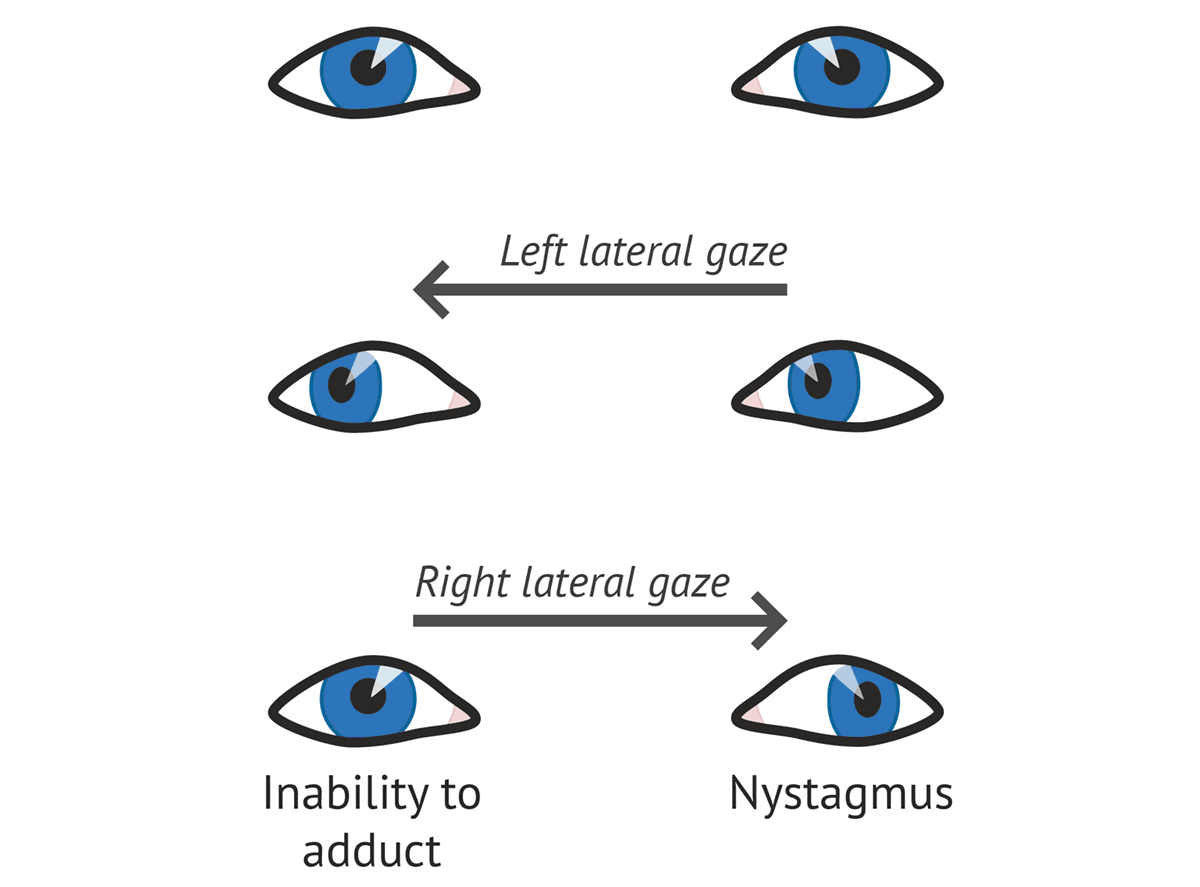Name the most common type of headache and describe it.
Tension type!
Bilateral, non-pulsating
"Band-like" or "Vice-like"
What are common underlying disorders related to stroke?
#1 Hypertension
Also: Hyperlipidemia, Smoking, Obesity, Diabetes, Hypercoaguability, CHF, Older age
Which type of tremor is exacerbated by action/movement?
Essential Tremor; exacerbated by action, improved with Alcohol and rest
Treatment: B-blocker (Propranolol)
Describe the inheritance pattern of Huntington's Disease and some symptoms.
Inheritance: Autosomal Dominant
Symptoms: Chorea, Dementia, Dystonia, Cognitive/behavioral decline
Diagnosis: Genetic Testing
Thunder Clap Headache
Subarachnoid Hemorrhage
What is the first line treatment for a cluster headache?
100% oxygen
Alternative Acute treatment: subcutaneous sumatriptan
Prophylaxis: Verapamil
What is the general timeframe that a TIA resolves in?
1-2 hours
TIA = transient neurologic dysfunction without infarction
Treatment: Dual anti-platelet (aspirin + clopidogrel)
What is the life expectancy of ALS?
3-5 years after diagnosis, usually diagnosed in 60s
Manifestations: asymmetric, progressive, proximal limb weakness
Note: spares sexual function, bowel/bladder function, and voluntary eye function
What is a test for myasthenia gravis to improve symptoms?
Ice test: ice pack is applied to the affected upper eyelid for 2-5 minutes; a positive test is the improvement of ptosis by > 2mm or more
Tensilon Test: injection of edrophonium (acetylcholinesterase) improves symptoms of ptosis within 2-5 minutes
Repetitive Nerve Stimulation test: positive test is progressive decline in compound muscle action potential after repetitive stimulation within 4-5 minutes
Laboratory: Anti-AcH receptor antibodies, Anti-muscle-specific kinase antibodies
Campylobacter Jejuni
Guillain Barre Syndrome
What nerve is involved with trigeminal neuralgia?
How do you treat this disorder?
CN V heheh, V1-V3 (most often V3)
Treatment: Carbamazepine (Tegretrol)
Second line - drugs for neuropathy (gabapentin, baclofen, lamotrigine)
Surgical decompression definitive treatment
What is the most common etiology of a SAH? Describe the patient presentation of this type of hemorrhagic stroke.
Etiology: rupture of berry aneurysm
Presentation: Unilateral, occipital area thunderclap headache, +/- LOC, N/V, Delirium, Stiff neck, photophobia
Treatment: Supportive, Aneurysmal repair, Nimodipine
What is the most common presenting symptom of MS?
Optic Neuritis
Also: pain with eye movement, monocular vision loss, diplopia with lateral gaze, fatigue, slurred speech, dizziness, tremor, unsteady gait
Relapsing-Remitting Disorder
What is the most common cancerous, primary brain tumor of adulthood?
Glioblastoma
Almost always fatal
Age: 45-65
Battle Sign
Basilar Skull Fracture
Your patient is a 40 year old female with a BMI of 35 and a new headache. She has no other PMH or contributory family history. What is your most likely diagnosis? What do you expect to see on exam?
Pseudotumor Cerebri (Idiopathic Intracranial HTN)
Exam: Papilledema, High ICP, transient visual field deficits, CN VI palsy
DX: MRI, LP (high opening pressure)
Treatment: Oral acetazolamide, thiazide diuretics, corticosteroids
Name at least 2 stroke scales :)
National Institutes of Health Stroke Scale (NIHSS)
Cincinnati Prehospital Stroke Scale (CPSS)
Face Arm Speech Test (FAST)
Los Angeles Prehospital Stroke Screen (LAPSS)
Recognition of Stroke in the ER (ROSIER)
Describe the CSF findings associated with Guillain Barre and name the most common etiology
CSF: albuminocytic dissociation = elevated protein, normal WBC, normal glucose
Etiology: Campylobacter Jejuni
S/s: symmetric, progressive ascending muscle weakness following recent URI or GI illness
Treatment: Supportive, plasmapheresis, or IVIG
Name the benign brain tumors
Meningioma (most common primary CNS tumor overall)
Schwannoma (presents with hearing loss)
Pituitary adenoma (can compress optic chiasm, causing bitemporal hemianopsia)
Acoustic Neuroma (also hearing loss)
Neurofibromas (associated with Neurofibromatosis)
Unilateral electric shock pain of head/face
Trigeminal Neuralgia
55 year old woman presents for a unilateral headache. She also endorses jaw claudication and monocular visual loss. How are you going to diagnose the most likely disorder?
Diagnosis is made by temporal artery biopsy
Treatment is high-dose steroids ASAP
Associated with PMR
What is a subdural hematoma and what causes it?
A subdural hematoma is a venous bleed between the dura mater and arachnoid mater due to tearing of cortical bridging veins; commonly seen in elderly or chronic EtOH
Mechanism: blunt trauma, bleeding on "contre-coup" side of injury
Presents with crescent-shaped hematoma on CT, headache, AMS, seizures, focal deficit
A 20 year old man wakes up with unilateral facial droop, hyperacusis, and taste disturbance. What is the most common cause of this disorder?
Herpes! (HSV) most common cause of Bell's Palsy
Also herpes zoster, post-URI, idiopathic
Treatment: Supportive (artificial tears, eye patch) +/- prednisone within 72 hours of onset
Describe the pathophysiology of Parkinson's Disease and treatment options.
Loss of dopaminergic neurons in the substantia nigra, resulting in dyskinesia, dystonia, and rigidity. Intracellular cytoplasmic inclusions, also called Lewy Bodies, are attributed to dementia. Subsequent disequilibrium ultimately results in increased Acetylcholine, disordered GABA, and diminished dopamine - thus impacting motor output.
Treatment
- Carbidopa, Levodopa: drugs to increase dopamine
- Anticholinergic (Benztropine): offset movements induced by diminished dopamine
Bilateral Internuclear Ophthalmoplegia
MS! (pathognomonic)
